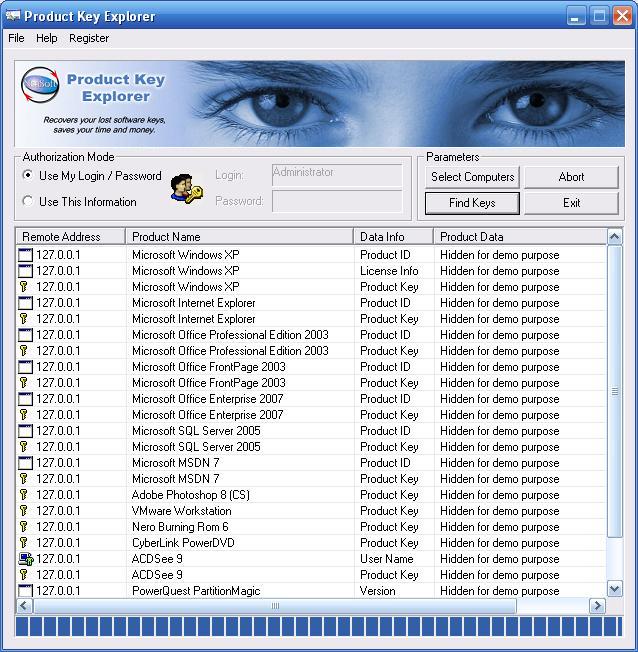Python Flask Generate Secret Key
Token-Based Authentication With Flask. The secret key must be random and only accessible server-side. Use the Python interpreter to generate a key:. Generate secret keys for Flask app. GitHub Gist: instantly share code, notes, and snippets.
| #!/usr/bin/env python |
| # encoding: utf-8 |
| '' |
| generate_keys.py |
| Generate CSRF and Session keys, output to secret_keys.py file |
| Usage: |
| generate_keys.py [-f] |
| Outputs secret_keys.py file in current folder |
| By default, an existing secret_keys file will not be replaced. |
| Use the '-f' flag to force the new keys to be written to the file |
| '' |
| importstring |
| importos.path |
| fromoptparseimportOptionParser |
| fromrandomimportchoice |
| fromstringimportTemplate |
| # File settings |
| file_name='secret_keys.py' |
| file_path=os.path.join( |
| os.path.dirname(os.path.realpath(__file__)), file_name) |
| file_template=Template(''# CSRF- and Session keys |
| CSRF_SECRET_KEY = '$csrf_key' |
| SESSION_KEY = '$session_key' |
| '') |
| # Get options from command line |
| parser=OptionParser() |
| parser.add_option( |
| '-d', |
| '--dir', |
| dest='dir', |
| help='specify dir to output to') |
| parser.add_option( |
| '-f', |
| '--force', |
| dest='force', |
| help='force overwrite of existing secret_keys file', |
| action='store_true') |
| parser.add_option( |
| '-r', |
| '--randomness', |
| dest='randomness', |
| help='length (randomness) of generated key; default = 24', |
| default=24) |
| (options, args) =parser.parse_args() |
| defgenerate_randomkey(length): |
| ''Generate random key, given a number of characters'' |
| chars=string.letters+string.digits |
| return'.join([choice(chars) foriinrange(length)]) |
| defwrite_file(contents): |
| ifoptions.dirisnotNone: |
| file_path=os.path.join(os.path.dirname( |
| os.path.realpath(__file__)), |
| options.dir, |
| file_name) |
| withopen(file_path, 'wb') asf: |
| f.write(contents) |
| defgenerate_keyfile(csrf_key, session_key): |
| ''Generate random keys for CSRF- and session key'' |
| output=file_template.safe_substitute(dict( |
| csrf_key=csrf_key, session_key=session_key |
| )) |
| ifos.path.exists(file_path): |
| ifoptions.forceisNone: |
| print('Warning: secret_keys.py file exists. ') |
| print('Use 'generate_keys.py --force' to force overwrite.') |
| else: |
| write_file(output) |
| else: |
| write_file(output) |
| defmain(): |
| r=options.randomness |
| csrf_key=generate_randomkey(r) |
| session_key=generate_randomkey(r) |
| generate_keyfile(csrf_key, session_key) |
| if__name__'__main__': |
| main() |

Setup
Virtual Environment
Create a virtual environment that uses Python 2:
Install the dependencies from the requirements file.
Create your local settings file
Create settings.py from settings.py.template
Note: settings.py is alreay referenced in the .gitignore and multiple python files, if you want a different settings file name be sure to update the references.
MS Office 2003 Pro s/n:F9FR6-M86TC-VWJBF-HTCTW- RD3HMOffice 11:GWH28-DGCMP-P6RC4-6J4MT- 3HFDYVisio/Project/OneNote/ FrontPage:WFDWY-XQXJF-RHRYG- BG7RQ-BBDHM oror 9980 0999 9191 7951 Auth:JA5O631BMS Office 2003 Small Business Upgrade s/n:CJGXR-3WVCK-89KGB-QRMFG- VJB64MS OneNote 2003 s/n:WFDWY-XQXJF-RHRYG-BG7RQ- BBDHMI hope you will find right product key for your Microsoft Office 2003.After you install with these keys, you have 30 days to use MS office 2003.Read more:.Sharing is caring! 
Add your values to the settings file.
At a minimum, CONSUMER_KEY, SHARED_SECRET, and secret_key need to be input by the developer. The secret_key is used by Flask, but the CONSUMER_KEY and SHARED_SECRET will be used in setting up the LTI. For security purposes, it's best to have randomized keys. You can generate random keys in the command line by using os.urandom(24) and inputing the resulting values into the settings.py file:
Run a Development Server
Here's how you run the flask app from the terminal:
Easy hide ip. Jan 15, 2020 Hide My IP Crack With License Key Download For Mac + Windows. Hide My IP Crack 6.0.630 Keygen is the best VPN for your data protection and privacy. It will help you to change your IP address. Also, you can get any other country IP easily to access banned sites in your country. Also, you can get protection by using this amazing software.

Python Flask Generate Secret Key Generator
Open in a Browser
Your running server will be visible at http://127.0.0.1:5000
Install LTI in Canvas
- Have the XML, consumer key, and secret ready.
- You can use the XML Config Builder to build XML.
- Navigate to the course that you would like the LTI to be added to. Click Settings in the course navigation bar. Then, select the Apps tab. Near the tabs on the right side, click 'View App Configurations'. It should lead to a page that lists what LTIs are inside the course. Click the button near the tabs that reads '+ App'.
- A modal should come up that allows you to customize how the app gets added. Change the configuration in the Configuration Type dropdown menu to 'By URL' or 'Paste XML' depending on how you have your LTI configured. If your LTI is publicly accessible, 'By URL' is recommended. From there, fill out the Name and Consumer Keys, and the Config URL or XML Configuration. Click Submit.
- Your LTI will appear depending on specifications in the XML. Currently, they get specified in the options tag within the extensions tag. Extensions can include these options:
- Editor Button (visible from within any wiki page editor in Canvas)
- Homework Submission (when a student is submitting content for an assignment)
- Course Navigation (link on the lefthand nav)
- Account Navigation (account-level navigation)
- User Navigation (user profile)
Python Flask Generate Secret Key Chain
Note: If you're using Canvas, your version might be finicky about SSL certificates. Keep HTTP/HTTPS in mind when creating your XML and while developing your project. Some browsers will disable non-SSL LTI content until you enable it through clicking a shield in the browser bar or something similar.